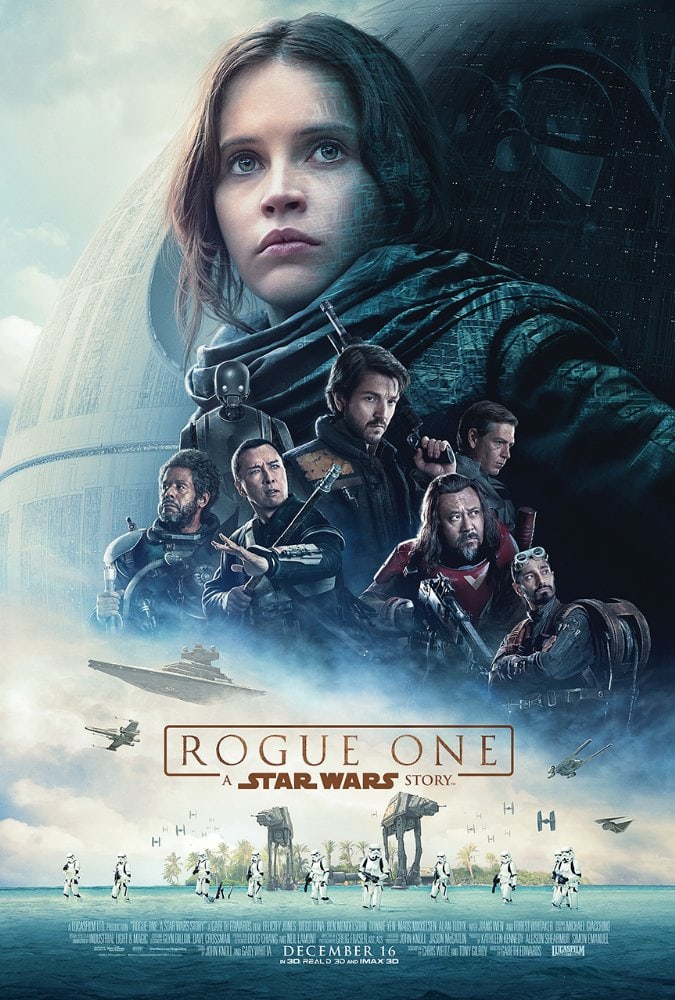Creating its own tone and identity while remaining familiar to fans of previous movies, “Rogue One: A Star Wars Story” expands on how the rebels stole the schematics for the imperial planet destroyer, the Death Star. Taking place between episodes three and four, “Rogue One” sits in an often unexplored area of the Star Wars timeline, with a few minor exceptions such as the “Force Unleashed” series of video games which are no longer canon after Disney’s acquisition of Lucasfilm and Lucasarts. Old favorites such as Darth Vader and even Moff Tarkin, the general who orders the destruction of Princess Leia’s home planet, Alderaan, by uttering the phrase, “You may fire when ready,” make appearances in “Rogue One,” but this distinct placement in the timeline forces the movie to introduce and be carried by completely new characters. These characters prove to be unique – my favorite being the thankfully under marketed K-2SO, the new android companion of the protagonists. The movie plays with the idea that just because someone is a rebel does not mean that they are good, and just because someone is an imperial does not mean that they are bad. Reality is not black and white, and the movie reflects this well.
In a series first, “Rogue One” ditched the old school yellow crawling text that has appeared to give background to all seven previous movies. This movie does reference this tradition by having the title appear in a similar manner, flying across space in the same yellow font. I understand that this may be a divisive decision, but the movie does benefit from breaking tradition like this. The way “Rogue One” presents itself without the text, it allows the narrative and characters to build the world while paying respect to the previous movies. “I don’t like the text very much,” said Butler Resident Director Nick Wagner. “It did a lot of world building, but there are better ways and better ways of writing.”
An interesting move by “Rogue One” is its use of CGI instead of casting look alikes to play Moff Tarkin and Princess Leia. Wagner described it as “it look[ing] a lot better than ‘Tron: Legacy,’” and that was my exact first impression as well. When Tarkin was at a distance, he looked like a flesh and blood human being. It was not until the camera zoomed in on his face a bit too much or he was with other people that things looked a little off. This use of technology is impressive, and I think we will be seeing more of it in the future.
Overall, “Rogue One: A Star Wars Story” is a welcome addition to the franchise, introducing memorable characters and tying everything together. My only gripe with the movie would be some pacing issues: near the end it went from zero to 100 without much in between. Despite this, I would still recommend this film.

